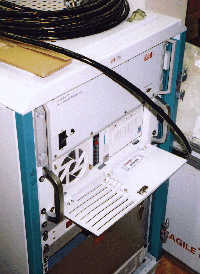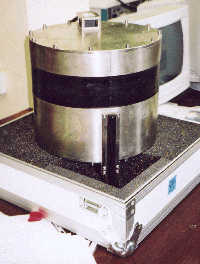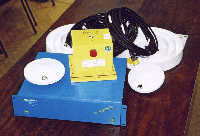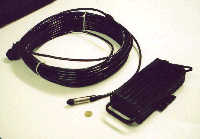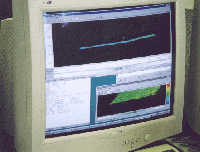The system is designed to illuminate a swath of the sea floor that is 150 degrees
across track and 1.5 degrees along track. Within the swath, water
depth is measured using 126 beams, spaced 1.2 degrees apart, with an acoustic
range from around 10-20 m up to 3000 m, depending on local water salinity, temperature
and ambient noise conditions. In practice this means that the system can achieve a swath of
7.4 times the local water depth in shallow water and somewhat less in deeper water
(around 3 km wide in 1-2 km depth, reducing to a narrower swath towards 3 km depth).
In addition to soundings, the system calculates an acoustic image of the
seabed, which is similar to a sidescan sonar image. This provides
complementary information to the soundings and can help to discriminate
seabed types from their acoustic backscatter (e.g. different rock or sediment
types).
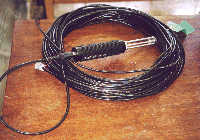
AML sound velocity probe.

SeaBat 8160 acoustic array in its frame. The transmitter lies along the long axis of the T and receiver along the shorter cross axis. The system is installed at the end of a pole attached at the wide flange just visible below the right side of the array (the array lies upside down while surveying with the transmitter pointing aft).
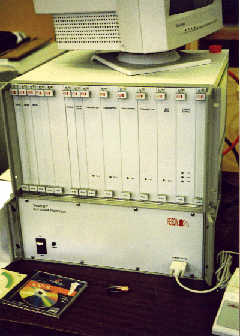
SeaBat 8160 transceiver (top) and 81-P sonar processor (bottom).
Click here for a view of the back.
